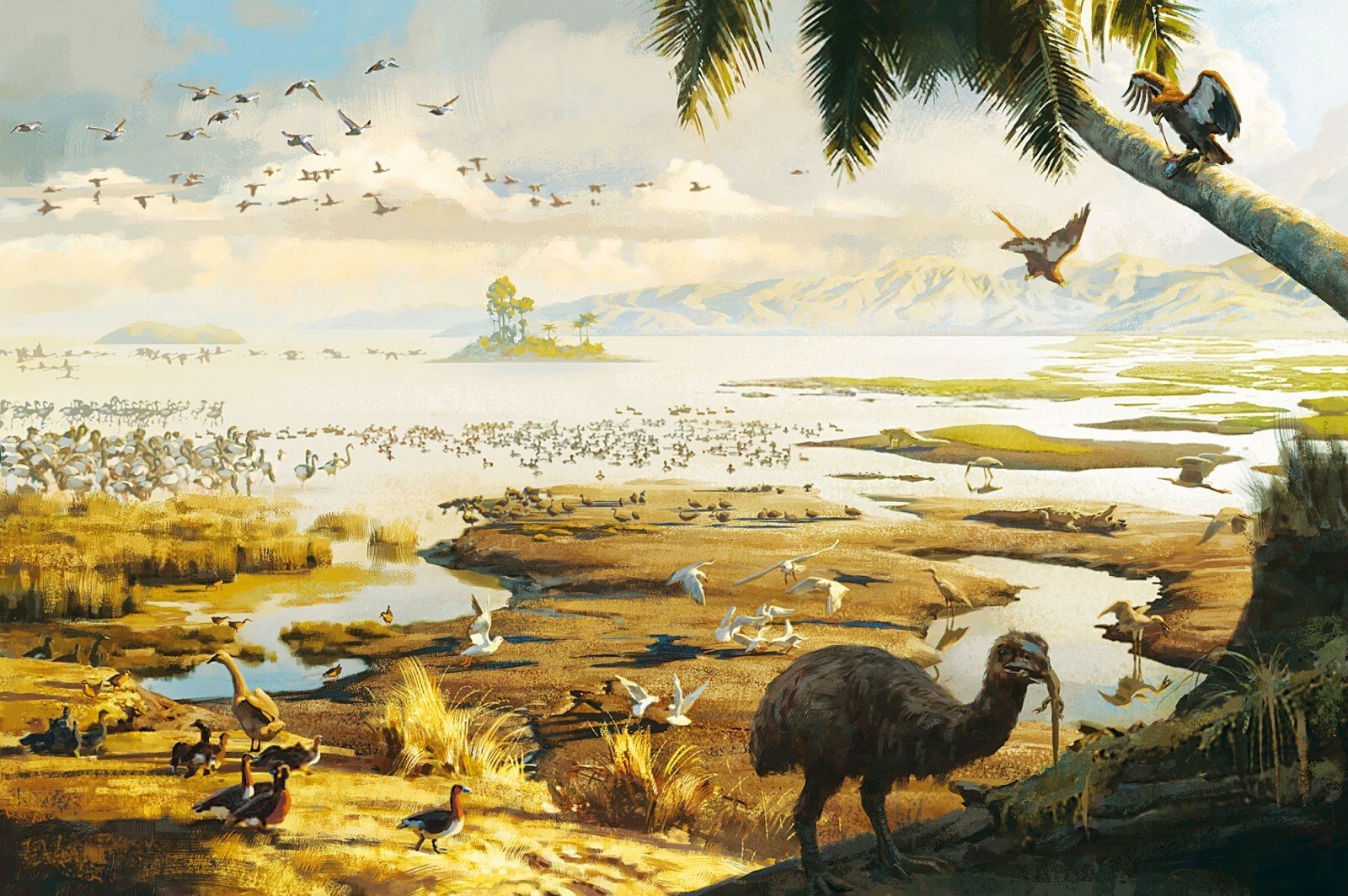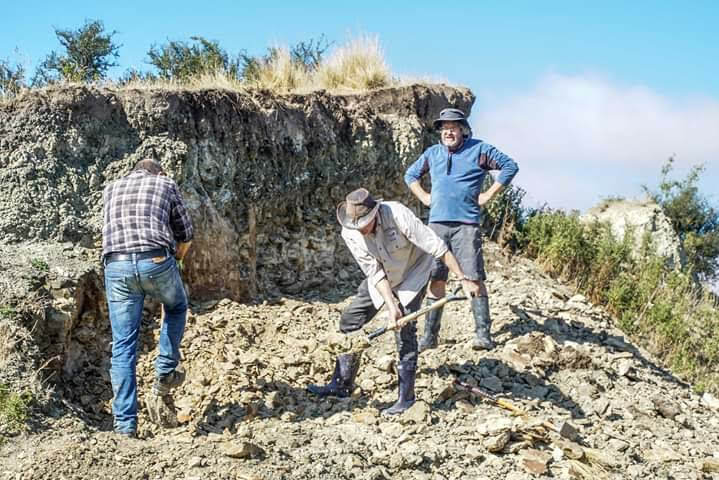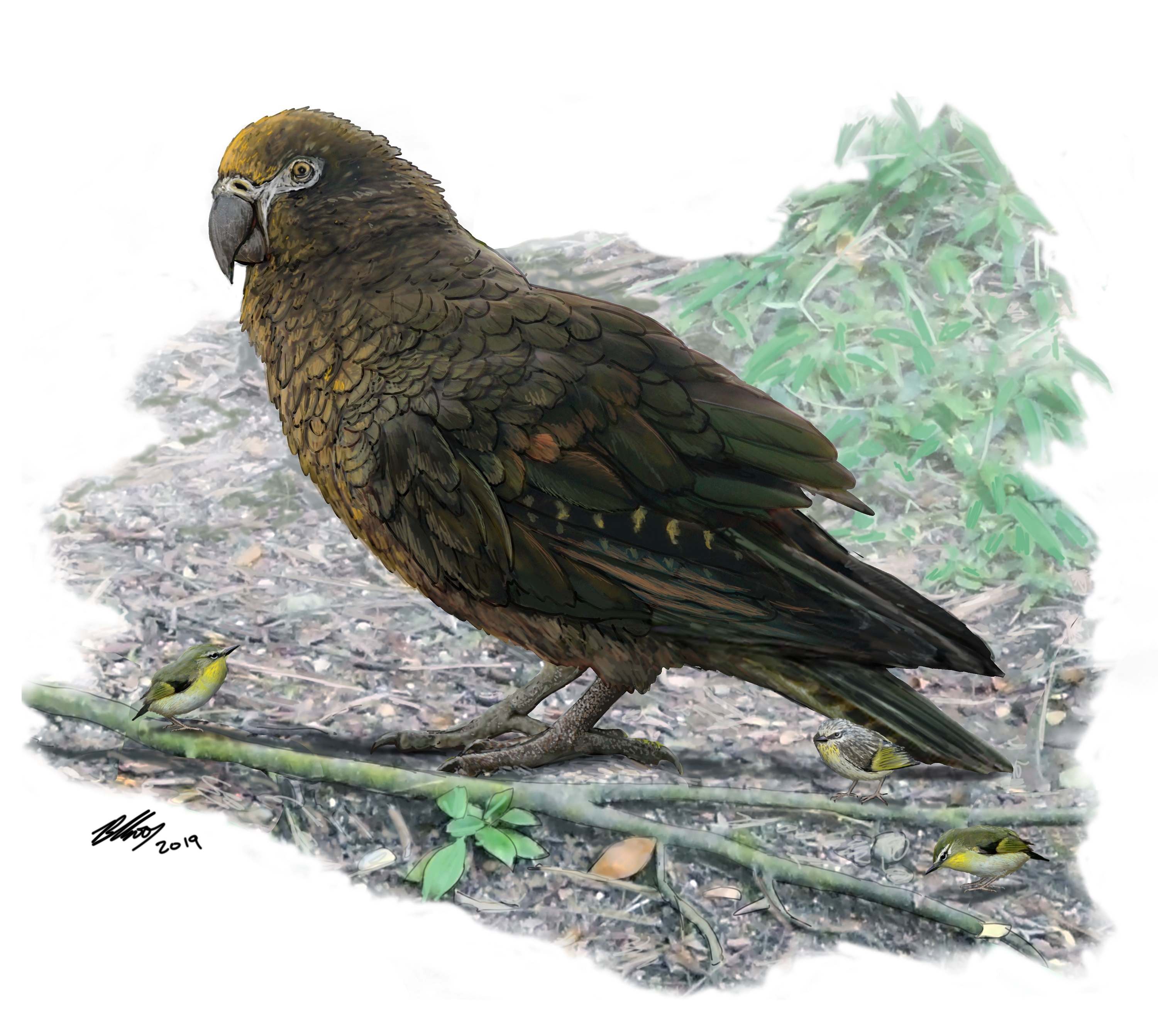Palaeontologists examine fossils to describe animals and plants from the ancient past. Like any scientific discipline, we need a large sample size to have confidence in our conclusions – so we do a lot of digging!
It's important for palaeontologists to understand past diversity – how many different species of animal or plant existed in an ancient environment. Our work at the St Bathans fossil site aims to determine how many animal species lived in what is now Otago about 20 million years ago, during a time called the early Miocene.
When studying the biodiversity of the past, the completeness of your study can be gauged by the number of new finds –– in our case new fossil bones. When we find a bone, we establish whether it belonged to a previously unknown species or one we've already described. You can only have a comprehensive understanding of the paleo-diversity (what used to be there) of a fossil site when the number of new finds plotted against number of known species plateaus.
The exploration of most New Zealand fossil sites is very recent. In Europe and North America, fossil sites have been explored since the mid-nineteenth century and huge amounts of excavation have taken place. One of the world’s most famous sites, the Solnhofen Limestone in Germany, has been mined since the 1850s and during this time tens of thousands of fossils have been recovered.
In all this time only 13 fossils of the most famous fossil bird, Archaeopteryx, have been recovered. These fossils have only recently allowed us to understand the biology of what is now considered the world’s oldest bird.

Since 2001, a team of New Zealand and Australian-based palaeontologists, led by New Zealand’s “Dr Moa”, Dr Trevor Worthy, has been studying life in New Zealand during the early Miocene epoch based on the fossils found in the bed of the ancient Lake Manuherikia.
This gigantic lake once covered the entire area of Central Otago, extending at its peak 19 million years ago from the Waitaki River in the north to the Nevis Valley in the south. It was about the same size as Lake Titicaca, the largest lake in South America, and 10 times the size of New Zealand’s largest current lake, Lake Taupō.
The animals and plants living in and around this lake are preserved in the clays and shales that accumulated on the bed of this huge body of water and in a few choice places are exposed for scientists to find and describe them.

Our dig team currently includes professionals from Canterbury Museum, Flinders University, The Museum of New Zealand Te Papa Tongarewa and the UNSW Sydney as well as amateurs from New Zealand and Australia. Each year, usually during the summer, we visit the valleys around the historic gold mining town of St Bathans.
Fossil deposits are often exposed by erosion in the banks of streams, which typically occurs in winter. This usually means they are temporary – a fact reinforced when a large part of the river bank where we discovered one of our most important finds, a leg bone revealing an ancestral kiwi, had eroded away when we returned the following year. Sadly many square metres of fossil deposit, containing treasures we can only guess at, were lost. Conversely, after 10 years of looking in one area without much joy, a flood revealed a new and important site.

For 2 weeks each year we work frenetically, digging up tonnes of clay from the former lake bed and sieving it to find the predominantly tiny fossilised remains of vertebrates preserved in these sediments. Two weeks in the field equates to a whole year of sorting our finds back in the lab.
We focus on St Bathans because these fossil localities provide the only insight into terrestrial (ground-dwelling) vertebrates living in New Zealand between 65 and 4 million years ago. The St Bathans fossils tell a story of a time when New Zealand was much warmer than today. The climate was warm-temperate to marginally subtropical.
The animals that lived in the area included fish, crocodilians, turtles, lizards, bats and a number of birds that disappeared when New Zealand’s climate began to cool some 15 million years ago. Other iconic birds, such as kiwi, moa and New Zealand wrens, which survived the change in temperature, are also found in the St Bathans fossil record.

An enduring problem in palaeontology is finding a fossil that reveals the presence of a new species, but not being able to identify that species. Identifying and naming a new species may not be possible if the bones are fragments or if we don't have the key bone or element we need to determine its relationships to other species and hence give it a name.
For example, in plants, often you can tell by the leaves that two plants are not the same, but you need the flower to know to what family they belong. The same is true for fossil birds. A duck's drumstick might be big but it has little use in separating the various groups of waterfowl. For ducks, the humerus (upper arm) is a key bone. For a pigeon, a bone found in the lower leg called the tarsometatarsus is important, while we typically need bats' teeth to properly identify them. Each group usually needs a different key element for us to know much about them.

Each year at St Bathans we find more fossil bones of elements (for example, a humerus or tibiotarsus) that can enhance our knowledge of a known species. Sometimes we find new species. Often these finds surprise us. Most recently we discovered a gigantic parrot we nicknamed 'Squawkzilla' that was completely unexpected.
We also have dozens of bones that we cannot identify yet, or that we need more key bones to describe adequately. Some groups of birds require very specialized research to identify differences. We have more than 100 bones of songbirds and we are confident a number of new species will be revealed once these are examined by specialists.
The St Bathans fossils were deposited in a lake so animals that lived on and in the lake are the most common. Specimens of terrestrial animals that lived around the lake are much rarer. We know of more than a dozen animals that are represented by only one to three bones, yet we have identified more than 6,000 fossils. Such rarities include owlet nightjar, swiftlet, kiwi, two species of pigeons, two herons, a large undescribed parrot, a land turtle, sphenodon (a relative of the tuatara), a large frog, moa (no bones described though a vertebra is known), a vespertilionid ("evening") bat, a hawk and an eagle.
Needless to say we have not yet reached the point where the new finds have plateaued, so we have many more years of digging ahead.
This research is currently supported by the Marsden Fund Council from Government funding, managed by the Royal Society of New Zealand Te Apārangi and the RS Allan Fund of Canterbury Museum, Flinders University and the UNSW (Sydney). In the past is has also been been supported by The Museum of New Zealand Te Papa Tongarewa and the Australian Research Council. This research would not be possible without the support of the landowners Anne and Euan Johnstone of Home Hills Station and Tony Enright of Southern Lakes Holdings.
Canterbury Museum's Natural History Research Curator Dr Vanesa De Pietri and Senior Curator Natural History Dr Paul Scofield are part of the team that visits the fossil sites of St Bathans every year. Flinders University's Professor Trevor Worthy has led the excavations since 2001.





